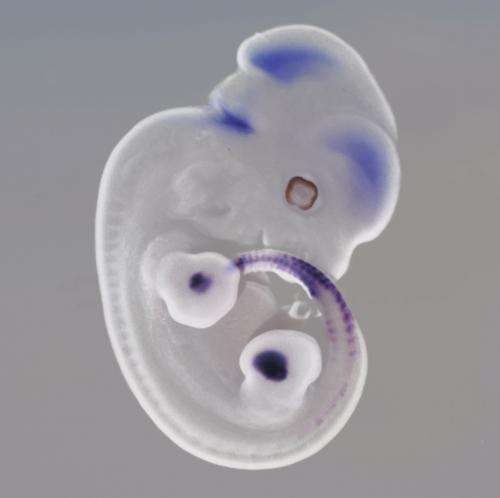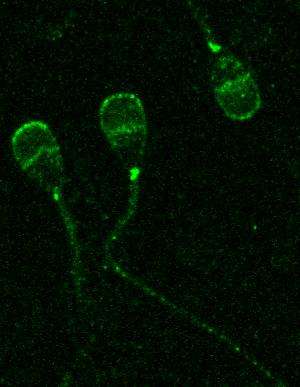How the genetic blueprints for limbs came from fish

A study led by Denis Duboule shows that limbs emerged during evolution by modernisation of a preexisting DNA structure.
Our first four-legged land ancestor came out of the sea some 350 million years ago. Watching a lungfish, our closest living fish relative, crawl on its four pointed fins gives us an idea of what the first evolutionary steps on land probably looked like. However, the transitional path between fin structural elements in fish and limbs in tetrapods remains elusive.
Both fish and land animals possess clusters of Hoxa and Hoxd genes, which are necessary for both fin and limb formation during embryonic development. Denis Duboule's team, at the University of Geneva and the EPFL, Switzerland, compared the structure and behavior of these gene clusters in embryos from mice and zebrafish. The researchers discovered similar 3-dimensional DNA organization of the fish and mouse clusters, which indicates that the main genetic mechanism used to pattern tetrapod limbs was already present in fish. However, when inserted into transgenic mouse embryos, the fish Hox genes were only active in the mouse arm but not in the digits, showing that the fish DNA lacks essential genetic elements for digit formation. The study, publishing January 21, in the open access journal PLOS Biology, concludes that, although the digital part of the limbs appear first in land animals, this happened by elaborating on an ancestral, pre-existing DNA infrastructure in fish.
Duboule's team had recently shown that, during mammalian development, Hoxd genes depend on a 'bimodal' 3-dimensional DNA structure to direct the development of the characteristic subdivision of the limbs into 'arm' and 'hand', a division which is absent from fish fins.
"To determine where the genetics behind this subdivision into 'hand' and 'arm' came from during evolution, we decided to closely compare the genetic processes at work in both fin and limb development", says Joost Woltering, post-doc at the Department of Genetics and Evolution of the Science Faculty of the UNIGE and lead author of this study. Surprisingly, the researchers found a similar bimodal 3-dimensional chromatin architecture in the Hoxd gene region in zebrafish embryos. These findings indicate that the regulatory mechanism used to pattern tetrapod limbs probably predates the divergence between fish and tetrapods. "In fact this finding was a great surprise as we expected that this 'bimodal' DNA conformation was exactly what would make all the difference in the genetics for making limbs or making fins" adds Joost Woltering.

Does this imply that digits are homologous to distal fin structures in fish? To answer this question, the geneticists inserted into mice embryos the genomic regions that regulate Hox gene expression in fish fins. "As another surprise, regulatory regions from fish triggered Hox gene expression predominantly in the arm and not in the digits. Altogether, this suggest that our digits evolved during the fin to limb transition by modernization of an already existing regulatory mechanism", explains Denis Duboule.
The researchers conclude that, although fish possess the Hox regulatory toolkit to produce digits, this potential is not utilized as it is in tetrapods. Therefore, they propose that fin radials, the bony elements of fins, are not homologous to tetrapod digits, although they rely in part on a shared regulatory strategy.
New lines of investigation are to find out exactly what has changed in the DNA elements of fish versus tetrapods. "By now we know a lot of genetic switches from the mouse that drive Hox expression in the digits. It is key to find out exactly how these processes work nowadays to understand what made digits appear and favor the colonization of the terrestrial environment." concludes Duboule.
More information: Woltering JM, Noordermeer D, Leleu M, Duboule D (2014) Conservation and Divergence of Regulatory Strategies at Hox Loci and the Origin of Tetrapod Digits. PLoS Biol 12(1): e1001773. DOI: 10.1371/journal.pbio.1001773
Journal information: PLoS Biology
Provided by Public Library of Science



















